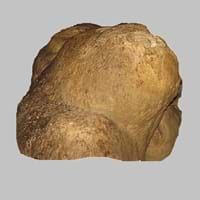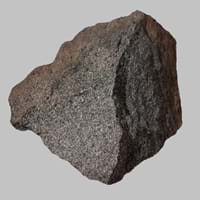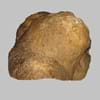Definition
Travertine is a mineral consisting of layered calcium carbonate formed by deposition from spring waters
Boninite is a mafic extrusive rock which is high in magnesium and silica content, formed in fore-arc environments, typically during the early stages of subduction
Discoverer
Marcus Vitruvius Pollio
Unknown
Etymology
From Italian travertino a kind of building stone, from Tiburs, adjective from Tibur (Tivoli), in Italy
From its occurrence in the Izu-Bonin arc south of Japan
Class
Sedimentary Rocks
Igneous Rocks
Sub-Class
Durable Rock, Medium Hardness Rock
Durable Rock, Hard Rock
Group
Not Applicable
Volcanic
Other Categories
Fine Grained Rock, Opaque Rock
Fine Grained Rock, Opaque Rock
Texture
Banded
Aphanitic to Porphyritic
Color
Beige, Black, Blue, Brown, Grey, Red, White, Yellow
Bluish - Grey, Brown, Colourless, Green, Grey
Durability
Durable
Durable
Scratch Resistant
Yes
Yes
Appearance
Fibrous
Dull and Soft
Interior Uses
Decorative Aggregates, Entryways, Flooring, Homes, Interior Decoration
Decorative Aggregates, Homes, Kitchens
Exterior Uses
As Building Stone, As Facing Stone, Paving Stone, Garden Decoration, Office Buildings
Garden Decoration, Office Buildings
Other Architectural Uses
Curbing
Not Yet Used
Construction Industry
As Dimension Stone, Building houses or walls, Cement Manufacture, Construction Aggregate, for Road Aggregate, Raw material for the manufacture of mortar
As a Flux in the Production of Steel and Pig Iron, As a Sintering Agent in Steel Industry to process Iron Ore, As Dimension Stone, Cement Manufacture, for Road Aggregate, Making natural cement, Manufacture of Magnesium and Dolomite Refractories
Medical Industry
Not Yet Used
Not Yet Used
Antiquity Uses
Artifacts, Jewellery, Monuments, Sculpture, Small Figurines
Artifacts
Commercial Uses
Cemetery Markers, Creating Artwork, Gemstone, Jewelry, Paper Industry, Pottery
An Oil and Gas Reservoir, Cemetery Markers, Creating Artwork, Soil Conditioner, Source of Magnesia (MgO)
Types
Not Available
Not Available
Features
Stalactites and stalagmites are formed from this rock, Surfaces are often shiny, Very fine grained rock
Available in Lots of Colors and Patterns, High Mg content, Is one of the oldest rock
Archaeological Significance
Monuments
Used
Not Yet Used
Famous Monuments
Colosseum in Rome, Italy, Sacré Coeur in Paris, France, Trevi Fountain in Rome, Italy
Not Applicable
Sculpture
Used
Not Yet Used
Famous Sculptures
Data Not Available
Not Applicable
Pictographs
Used
Not Used
Petroglyphs
Used
Not Used
Figurines
Used
Not Yet Used
Formation
Travertine is a type of sedimentary rock formed when a river carries or transports pieces of broken rock which then undergo sedimentation. They are then subjected to high temperature and pressure hence forming travertine rock.
Boninite is a type of Igneous rock which is formed through the cooling and solidification of lava or existing rocks.
Mineral Content
Calcite, Clay, Feldspar, Micas, Quartz
Amphibole, Apatite, Biotite, Feldspar, Garnet, Hornblade, Ilmenite
Compound Content
Ca, NaCl, CaO, Oxygen
Silicon Dioxide
Types of Metamorphism
Not Applicable
Burial Metamorphism, Cataclastic Metamorphism, Contact Metamorphism, Regional Metamorphism
Types of Weathering
Biological Weathering, Chemical Weathering, Mechanical Weathering
Biological Weathering
Types of Erosion
Chemical Erosion, Coastal Erosion, Glacier Erosion
Chemical Erosion, Coastal Erosion, Wind Erosion
Grain Size
Fine Grained
Fine Grained
Fracture
Splintery
Uneven
Porosity
Highly Porous
Less Porous
Luster
Dull to Pearly
Vitreous
Compressive Strength
Not Available
Cleavage
Non-Existent
Not Available
Specific Gravity
1.68
2.5-2.8
Transparency
Opaque
Opaque
Density
2.71 g/cm3
Not Available
Specific Heat Capacity
Not Available
Resistance
Impact Resistant, Pressure Resistant, Wear Resistant
Heat Resistant, Impact Resistant, Pressure Resistant, Wear Resistant
Deposits in Eastern Continents
Asia
China, Russia
Not Available
Africa
Not Yet Found
South Africa
Europe
Austria, Italy, Portugal, United Kingdom
England, Finland, United Kingdom
Others
Not Yet Found
Antarctica, Greenland
Deposits in Western Continents
North America
Canada, USA
USA
South America
Argentina, Bolivia, Ecuador
Colombia, Uruguay
Deposits in Oceania Continent
Australia
Not Yet Found
New Zealand, Western Australia
All about Travertine and Boninite Properties
Know all about Travertine and Boninite properties here. All properties of rocks are important as they define the type of rock and its application. Travertine belongs to Sedimentary Rocks while Boninite belongs to Igneous Rocks.Texture of Travertine is Banded whereas that of Boninite is Aphanitic to Porphyritic. Travertine appears Fibrous and Boninite appears Dull and Soft. The luster of Travertine is dull to pearly while that of Boninite is vitreous. Travertine is available in beige, black, blue, brown, grey, red, white, yellow colors whereas Boninite is available in bluish - grey, brown, colourless, green, grey colors. The commercial uses of Travertine are cemetery markers, creating artwork, gemstone, jewelry, paper industry, pottery and that of Boninite are an oil and gas reservoir, cemetery markers, creating artwork, soil conditioner, source of magnesia (mgo).










